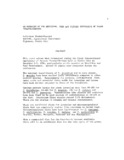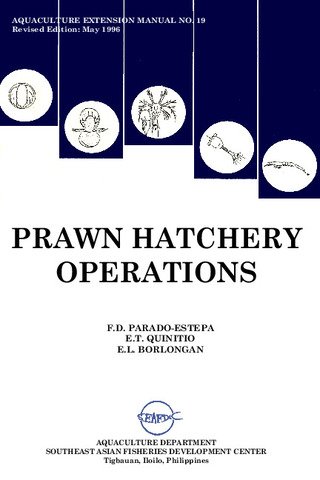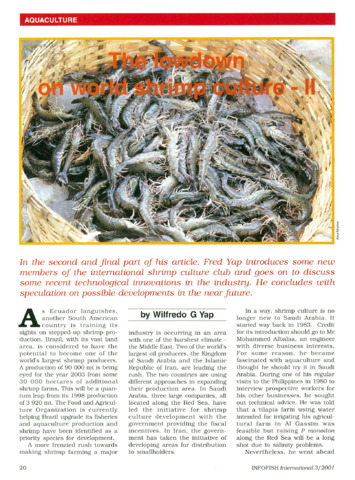Growth and survival of Penaeus monodon Fabricius zoeae on different diatom feeds
- Global styles
- MLA
- Vancouver
- Elsevier - Harvard
- APA
- Help

Date
1980Author
Page views
1,386ASFA keyword
AGROVOC keyword
Taxonomic term
Metadata
Show full item record
Share
Abstract
A study was undertaken to determine the most suitable food for Penaeus monodon zoea out of mixed diatoms, Skeletonema costatum, Chaetoceros calcitrans and C. gracilis. Results indicate that mixed diatoms and C. gracilis are the better food. Addition of zooplankton, e.g.rotifers, is also recommended as early as Z3 since the larvae start to be omnivorous at this stage.
Suggested Citation
Suñaz, F. P. (1980). Growth and survival of Penaeus monodon Fabricius zoeae on different diatom feeds. SEAFDEC Aquaculture Department Quarterly Research Report , 4(3), 7-11. http://hdl.handle.net/10862/2372
Type
ArticleCollections
Related items
Showing items related by title, author, creator and subject.
-
An overview of the nutrition, feed and feeding techniques of prawn penaeid/shrimps
Piedad-Pascual, Felicitas (Philippine Council for Aquatic and Marine Research and Development, 1989)This paper echoes what transpired during the first International Conference of Penaeid Prawns/Shrimps held in Iloilo City in December 4-7, 1984, particularly on the Nutrition nd Feed Development. Around 25 papers were ... -
Series: Aquaculture extension manual; No. 19
Prawn hatchery operations
Parado-Estepa, Fe D.; Quinitio, Emilia T. ; Borlongan, Emeterio L. (Aquaculture Department, Southeast Asian Fisheries Development Center, 1996-05)
The manual, an updated version of the 1984 SEAFDEC/AQD manual, presents the underlying principles and step-by-step instructions of prawn larval and post-larval rearing. The techniques described are not only applicable to ...
; Borlongan, Emeterio L. (Aquaculture Department, Southeast Asian Fisheries Development Center, 1996-05)
The manual, an updated version of the 1984 SEAFDEC/AQD manual, presents the underlying principles and step-by-step instructions of prawn larval and post-larval rearing. The techniques described are not only applicable to ... -
The lowdown on world shrimp culture - II
Yap, Wilfredo G. (INFOFISH, 2001)This paper introduces some new members of the international shrimp culture club and goes on to discuss some recent technological innovations in the industry, particularly the polyculture of tilapia (mainly Oreochromis ...






